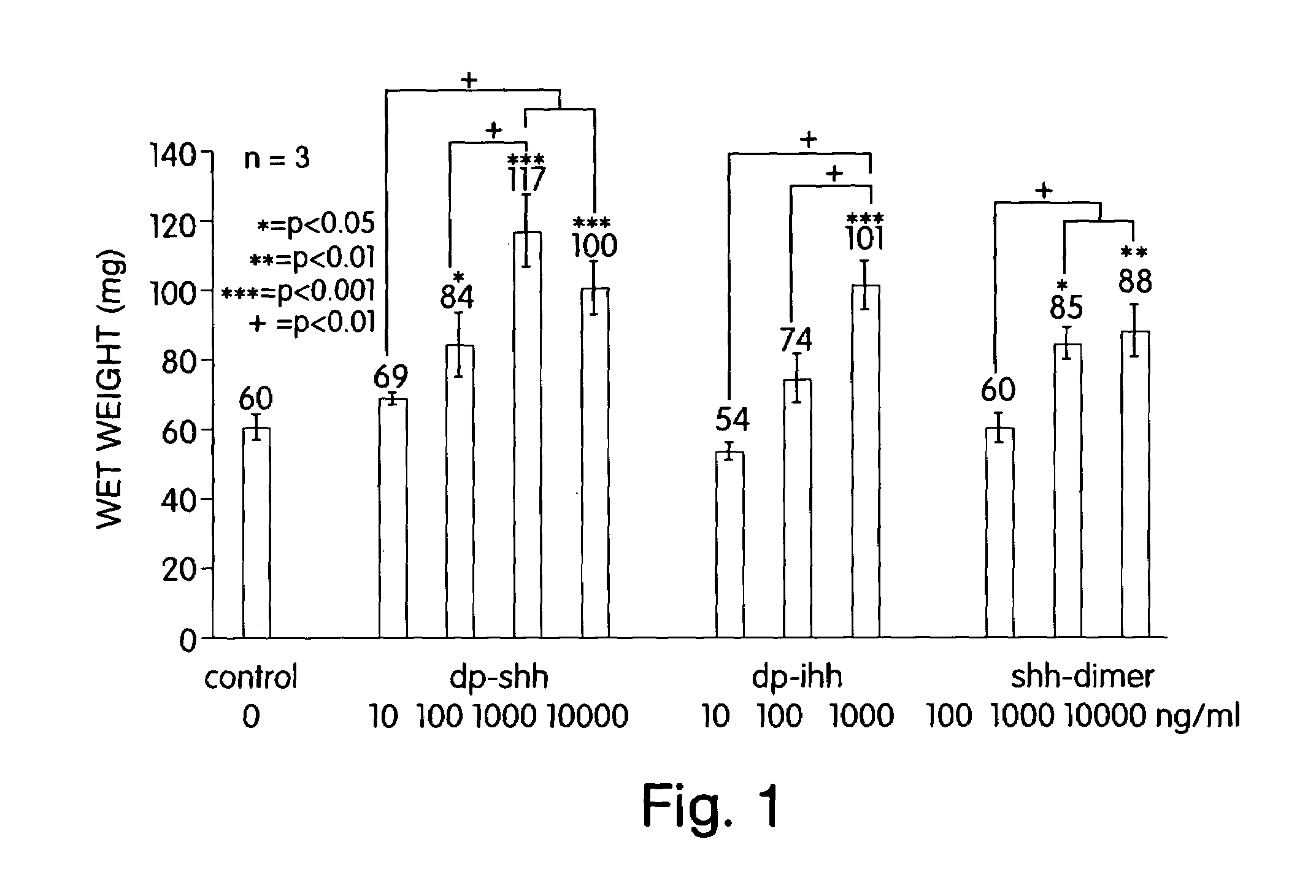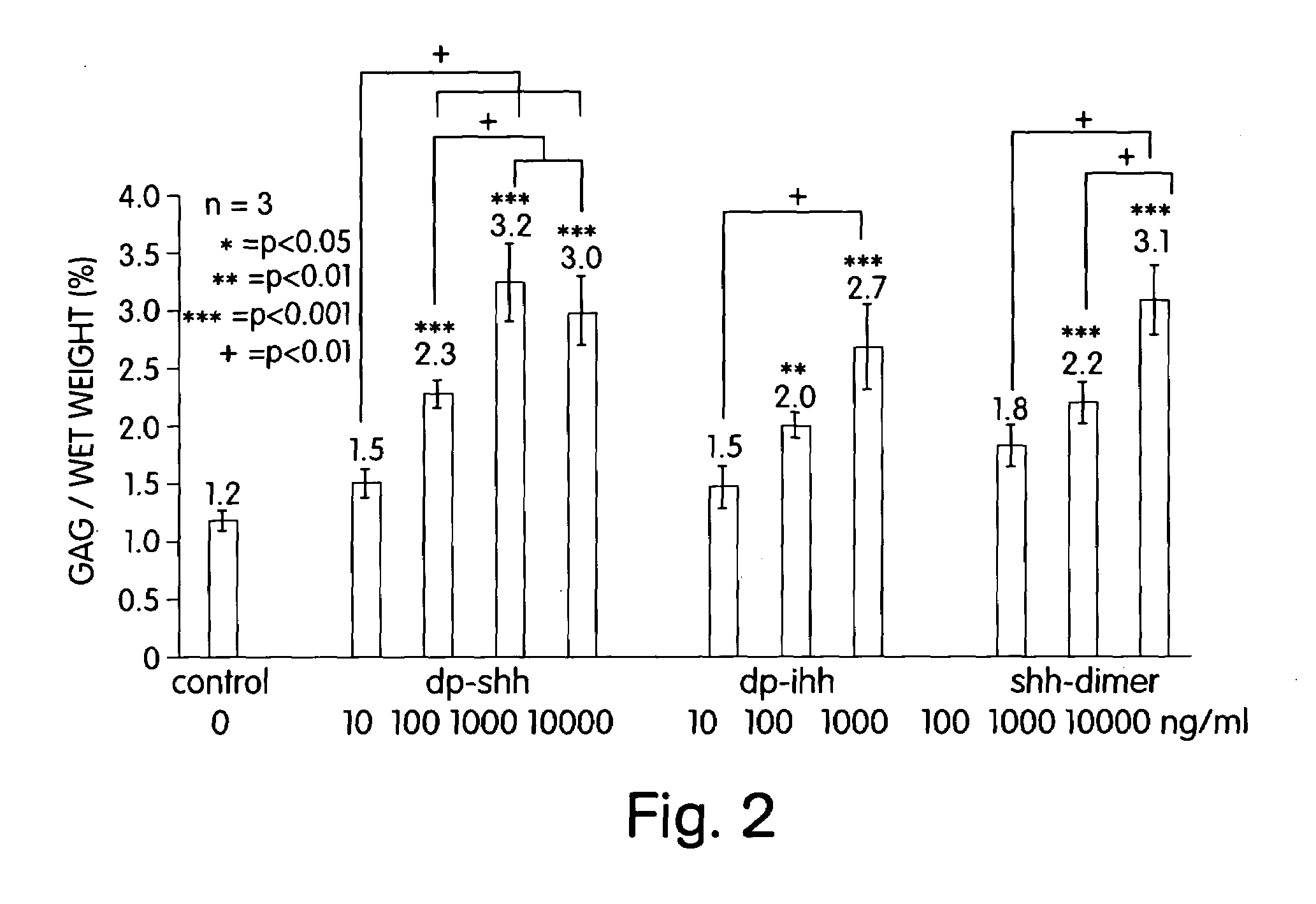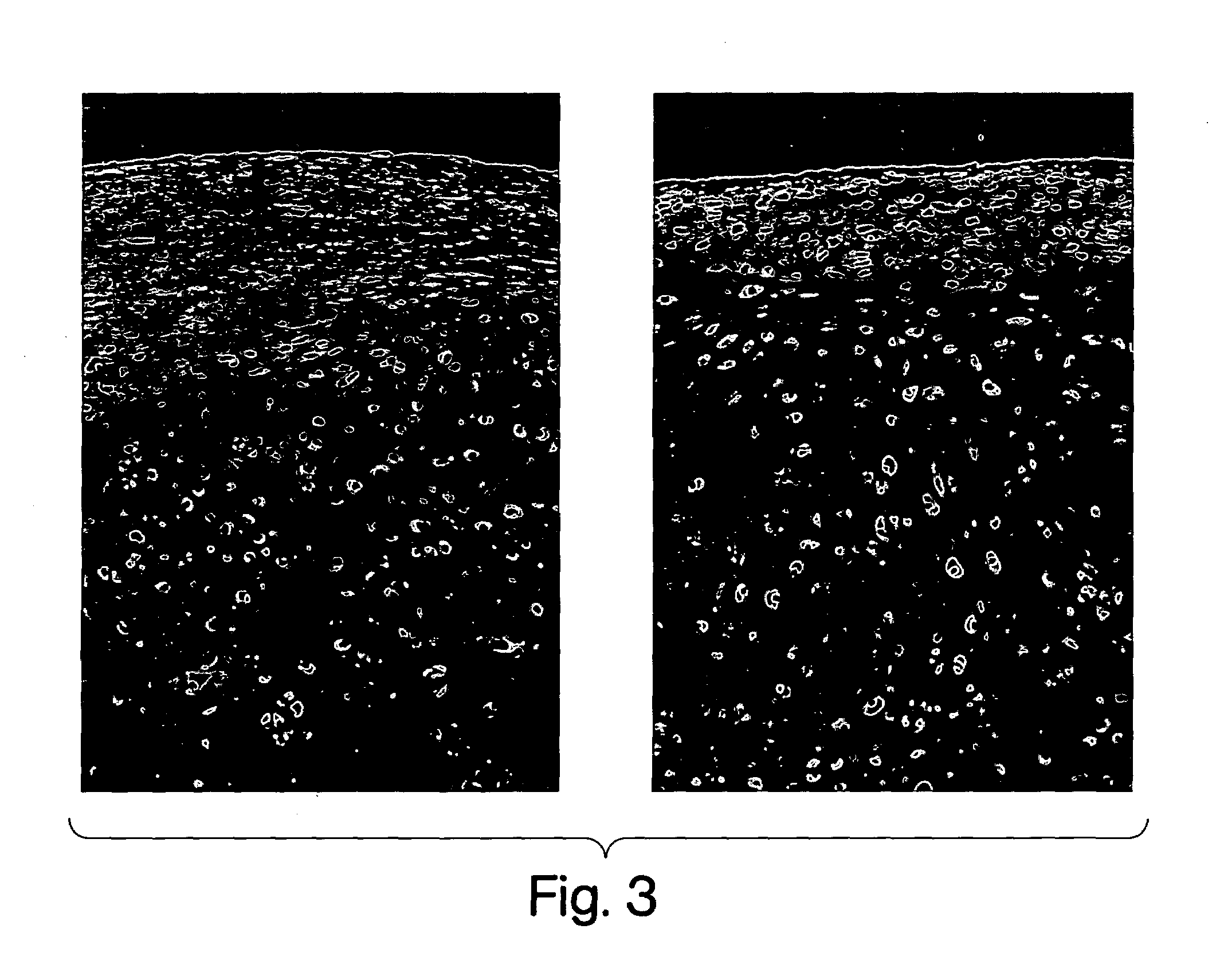Methods and reagents for tissue engineering of cartilage in vitro
a cartilage tissue and tissue engineering technology, applied in the field of cartilage tissue engineering in vitro, can solve the problems of fibrocartilage, lack of articular cartilage biomechanical properties, and pain in the damage to this tissue, and achieve the effect of improving the properties of the tissue developed
- Summary
- Abstract
- Description
- Claims
- Application Information
AI Technical Summary
Benefits of technology
Problems solved by technology
Method used
Image
Examples
Embodiment Construction
I. Overview
[0022]The present invention makes available an optimal concentration of a hedgehog polypeptide for modulating growth and / or cartilage production by chondrocytes. The present invention allows for improvements in the culturing of chondrocytes to develop cartilaginous tissue ex vivo suitable for implantation to replace damaged or deteriorated cartilage in a patient.
II. Definitions
[0023]For convenience, certain terms employed in the specification, examples, and appended claims are collected here.
[0024]An “effective amount” of, e.g., a therapeutic compound, with respect to the subject method of treatment, refers to an amount of the compound in a preparation which, when applied as part of a desired dosage regimen brings about a desirable response according to clinically acceptable standards for the disorder to be treated.
[0025]The “growth state” of a cell refers to the rate of proliferation of the cell and / or the state of differentiation of the cell. An “altered growth state” i...
PUM
| Property | Measurement | Unit |
|---|---|---|
| concentration | aaaaa | aaaaa |
| concentration | aaaaa | aaaaa |
| concentrations | aaaaa | aaaaa |
Abstract
Description
Claims
Application Information
 Login to View More
Login to View More - R&D
- Intellectual Property
- Life Sciences
- Materials
- Tech Scout
- Unparalleled Data Quality
- Higher Quality Content
- 60% Fewer Hallucinations
Browse by: Latest US Patents, China's latest patents, Technical Efficacy Thesaurus, Application Domain, Technology Topic, Popular Technical Reports.
© 2025 PatSnap. All rights reserved.Legal|Privacy policy|Modern Slavery Act Transparency Statement|Sitemap|About US| Contact US: help@patsnap.com



